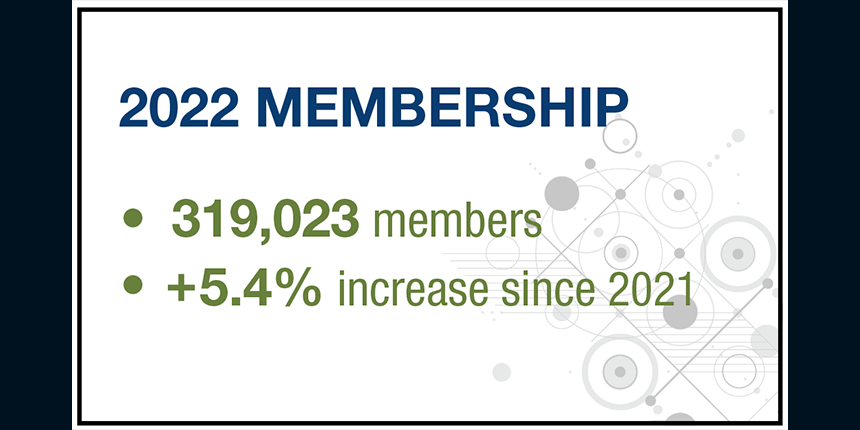

Engineers Canada has released its 2023 National Membership Report. The annual report gathers information on the provincial and territorial engineering regulators’ membership, providing information about the growth and composition of the engineering profession in Canada. This year’s report presents data from the 2022 calendar year.
2022 saw continued growth in the engineering profession, with an additional 16,474 members since 2021 to a total of 319,023 members. This represents a 5.4 per cent growth in the profession between 2021 and 2022. The largest increase in membership numbers was seen in Quebec (10,129 more members), while the greatest decline (715 fewer members) was seen in Alberta.
While women continue to be underrepresented in the engineering profession, the percentage of female-identifying engineering members continued to increase in 2022. Female-identifying members represented 15 per cent of overall membership in 2022, an increase from 14.4 per cent in 2021. The largest increase between 2021 and 2022 was seen in Quebec, with approximately 26.8 per cent growth.
Female-identifying engineers accounted for 19.2 per cent of newly licensed engineers in Canada in 2022, a decrease from 19.8 per cent in 2021. The number of female-identifying engineers-in-training (EITs) stayed largely constant at 21.7 per cent in 2022, compared to 21.6 per cent in 2021. The percentage of female-identifying engineering student members also saw a small decrease in 2022 to 24.3 per cent, from 24.9 per cent in 2021.
The 2023 National Membership Report is available on the Engineers Canada website.


